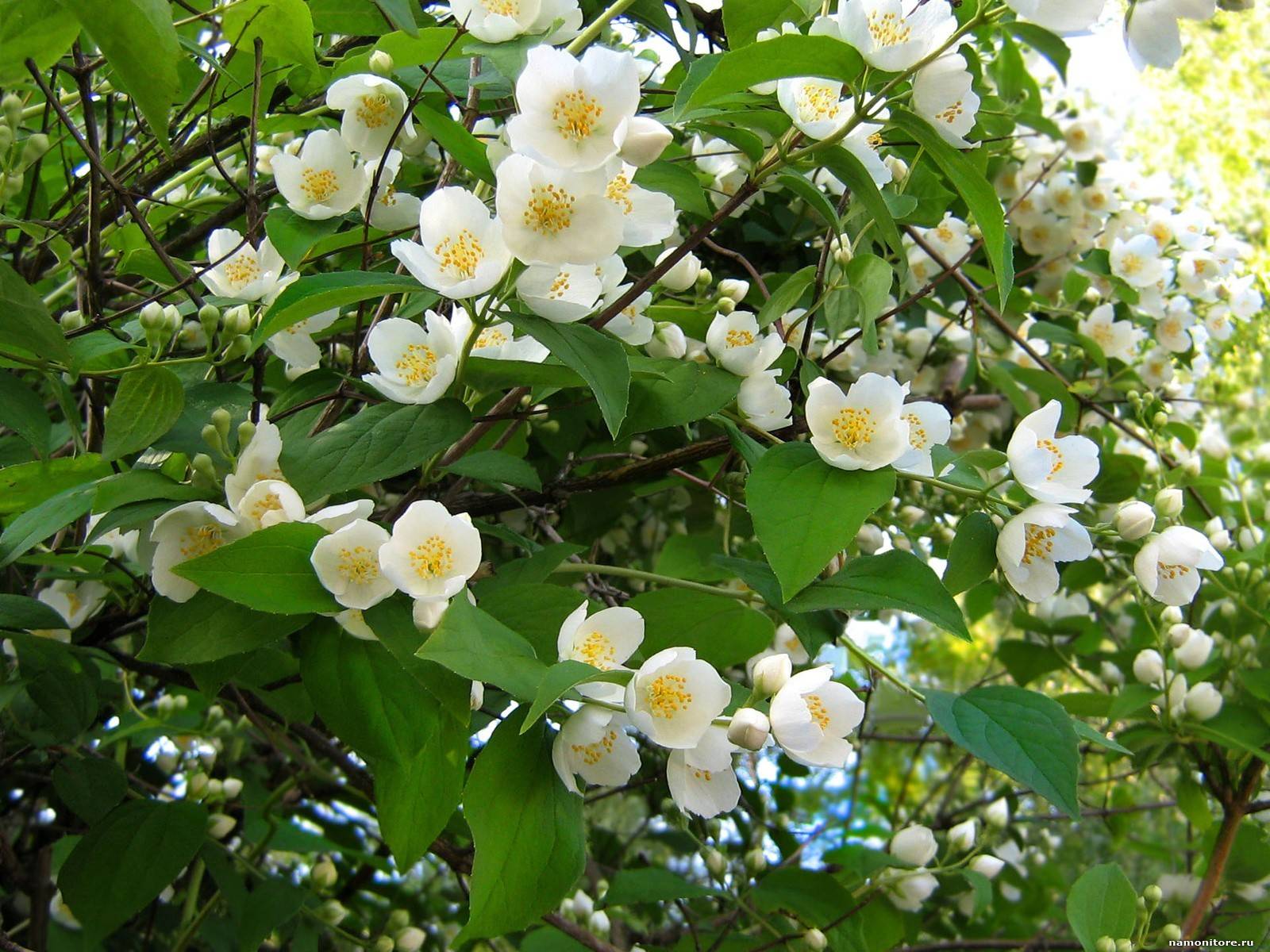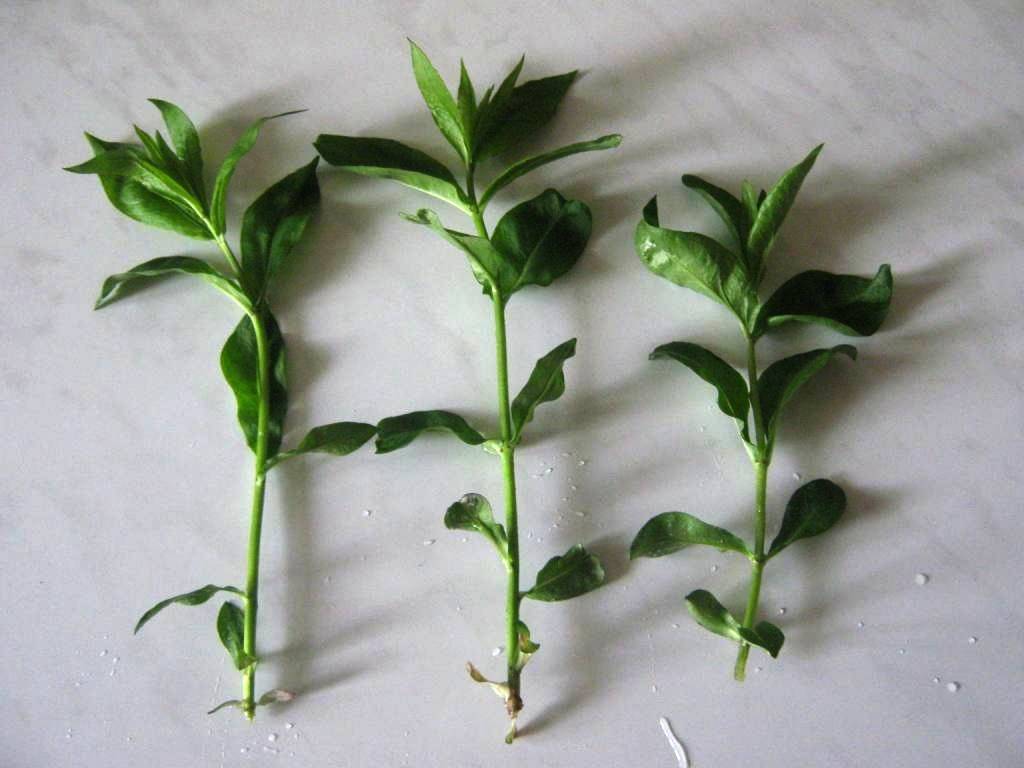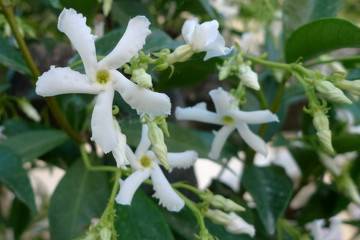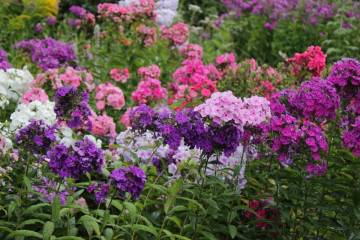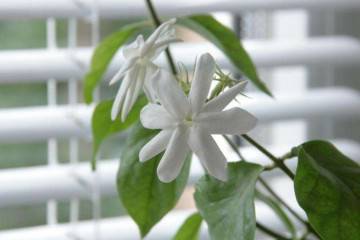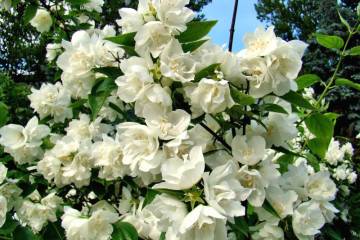How to propagate garden jasmine in spring and summer
Content:
Jasmine is often confused with another shrub - mock orange. Outwardly, these two plants are really very similar, however, they are two different shrubs. Jasmine sometimes has to be propagated. The methods of its reproduction are also suitable for the chubushnik.
How to propagate garden jasmine
With long-term cultivation of jasmine, sooner or later there is a need for its reproduction. This is necessary not only to plant as many bushes in the garden as possible, but also to thin out the plantings (if the bush is too large, it multiplies by division) or to update the plant if it has been growing for a very long time.
How jasmine shrub reproduces:
- cuttings;
- layering;
- seeds;
- dividing the bush.
All of these methods of planting shrubs have their own characteristics. The most common methods are bush division and cuttings. Jasmine is the most difficult to plant with seeds. The seed method is mainly used by experienced growers or breeders.
Dates when it can be done
One of the main conditions for the reproduction of shrubs is the timing. Planting time depends on the breeding method. Cuttings can be carried out both in summer and spring. If the jasmine shrub reproduces in this way in the summer, you need to cut the green cuttings. If in the spring - lignified.
The optimal time for propagation by layering is autumn. The division of the bush can be done from late spring to mid-autumn. Seeds are sown at the end of winter in containers that should be kept in the house.
Features of the reproduction of garden jasmine in spring, summer and autumn
In spring, the best time to plant is late April or early May. In the summer, shrubs can be planted any month. The main thing is to choose a favorable day for planting. It's best to do this on a cool, cloudy day. In autumn, breeding takes place from late August to mid-October. In the southern regions, this period may be extended for several more weeks.
If planting is planned for the spring or summer, you need to prepare the ground in the fall. The soil should be dug to a depth of 15 cm and manure or compost should be added. In the spring, the soil is dug up again. If the transplant is carried out in the fall, accordingly, the soil must be prepared in the spring.
Methods for breeding chubushnik with a description
Jasmine propagation is a simple process that does not require special knowledge in floriculture or skills. But the peculiarities of each of the breeding methods should be taken into account so that the future bush will take root without problems.
Breeding rules by cuttings
The first method is jasmine cuttings in the summer. The procedure will require a sharp pruner, a large pot, soil, and wood ash. For rooting - expanded clay, cap, sand. To understand how to propagate jasmine by cuttings in the summer, you do not need to be an experienced florist. The main thing is to do it in the first half of June.
In order for the reproduction of jasmine by cuttings in the summer to be successful, the following steps must be performed:
- carefully cut the twig with a pruner along with a part of the bark;
- pour expanded clay and river sand on the bottom of the pot, fill it with soil. All ingredients are best mixed slightly damp;
- pour a fungicide over the soil;
- cut off leaves and inflorescences on the lower part of the cutting;
- dilute the drug "Epin" in clean water. It stimulates root growth in cuttings. Put the cuttings in the solution and leave them for 12 hours. This measure is not mandatory, but if this is done, the cuttings will take root much faster;
- before planting, the cuttings must be dipped in a root formation stimulator (sold in flower shops);
- cuttings are planted in the ground at an angle of 40 degrees. It is not advisable to deeply deepen them;
- put on a cap on top to create a greenhouse effect.
The pot of cuttings should be removed to a shaded area in the home garden. In a few weeks, they will give roots. After about 2 months, the cuttings can be transplanted to a permanent place.
How to cut jasmine in autumn
For this method, you need to use completely lignified cuttings with a length of at least 10 cm. Each branch should have 3-4 large buds. The cuttings are folded into a container and covered with wet sand. Then the containers should be removed to a cool and dark place until spring. The room temperature should be close to zero.
In spring, cuttings can be planted in open ground when warm weather sets in. The first time they will have to be covered at night. So they will quickly give roots and will not freeze if frost suddenly hits.
Seed planting rules
The most laborious method is seed. Moreover, it is very long-lasting. Seedlings are first grown in room conditions, and when the seedlings grow up and get stronger, they are transplanted into open ground. It is also worth noting that with this method, the shrub does not retain species characteristics.
How to propagate jasmine seeds:
- before planting, the seeds must be soaked in warm water for several hours;
- after that they are placed in wet sawdust or peat for 3-4 days;
- before planting the planting material in the ground, it is dried;
- then mixed with wet river sand;
- forest soil, sod and compost are introduced into the soil for sowing;
- after sowing, the seeds are watered with warm water.
The next day after the sprout appears, it is watered with a weak solution of potassium permanganate. The pick is carried out after the appearance of the first full-fledged leaves.
Before transplanting seedlings outside, they need to be hardened. Hardening lasts for a week. On the first day, the container is taken outside for 15 minutes. Then the time is gradually added. Thanks to preliminary hardening, the seedlings will better survive planting in a new place.
How to propagate by layering
Another easy way to plant jasmine in your garden is by layering. The best time to breed in this way is early spring.
How to grow jasmine from a twig:
- first you need to choose a long, powerful branch growing at the very bottom;
- dig a shallow groove nearby;
- bend the branch into the groove and cover with soil. So that it does not rise, it must be fixed.
Leave the branch in this form until autumn. The term depends on how quickly the buds on the branch will give roots. After a while, layers should appear. Rooting usually takes several months.
When the shoots grow up to 8-13 cm, they need to be spud. After about a week, the hilling is repeated again. You need to continue until the height of the earthen hill reaches 20 cm.
After a year, when the layers have grown enough, they can be divided into several parts. Each part is planted in a new place away from each other so as not to thicken the planting. The height of the layers at the time of transplanting should be approximately 50-70 cm.
How to propagate by dividing a bush
Reproduction of jasmine by dividing the bush is usually used if the plant is already mature and strongly overgrown. This is done mainly in summer or early autumn.
How jasmine multiplies by dividing the bush:
- the bush is watered abundantly and dug in from all sides;
- during digging, you need to carefully remove the bush from the ground so as not to damage the roots;
- during division, the root system is cut into several pieces of the same size;
- after that you need to dig deep holes;
- put the separated part of the bush in the hole and cover it with soil;
- pour abundantly with warm water and wood ash.
Transplant rules
Sometimes it becomes necessary to transplant a jasmine bush. This is best done in the spring. In the south, transplants can be carried out in the fall. First, you need to dig a large hole so that the shrub will fit in it along with a lump of earth from the old place. After transplanting, the soil is sprinkled with wood ash and watered abundantly with warm water.
Jasmine care
You need to know not only how to breed jasmine, but also how to care for it after that. First and foremost, it is important to choose the right landing site. Terry jasmine belongs to light-loving plants. It is advisable to plant it in open areas.
After transplanting, you can apply complex mineral fertilizers. From organic matter, rotted manure, wood ash, and poultry manure solution are used.
In spring and summer, the bush needs a lot of moisture. The soil should always be moist. Watering takes place in the evening after sunset. If you water jasmine during the day, there is a high likelihood of burns on the foliage. It is imperative to water it under the root with warm water. Cold watering is prohibited.
Do not forget that caring for a bush includes the prevention of various diseases and the appearance of pests. Fortunately, pests are rare due to the strong aroma that the inflorescences exude. In early spring, it is still recommended to spray jasmine with Bordeaux liquid.
Another important procedure is pruning. First, all weak and dry branches are removed. The longest or inward-growing stems are then cut. The bush can be shaped like a ball. For pruning, a sharp pruner is used, which does not leave creases on the branches.
Freshly planted cuttings, cuttings and parts of the bush must be covered for the winter so that the plants do not die due to frost. Spruce branches, wormwood, peat or agrofibre can be used as shelter.
Jasmine propagation is a simple procedure that does not require special knowledge in floriculture. Young cuttings and layering quickly take root in a new place.
